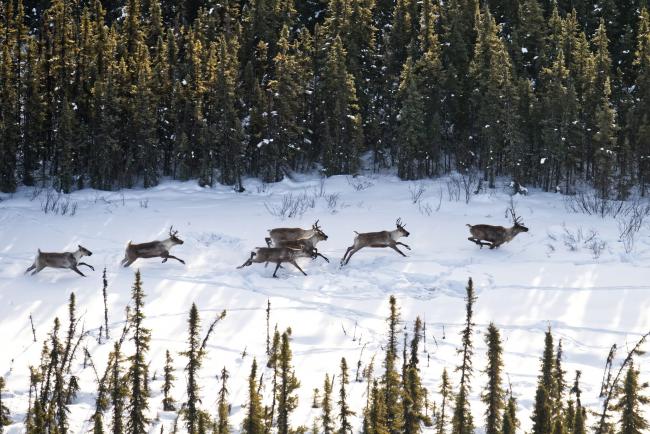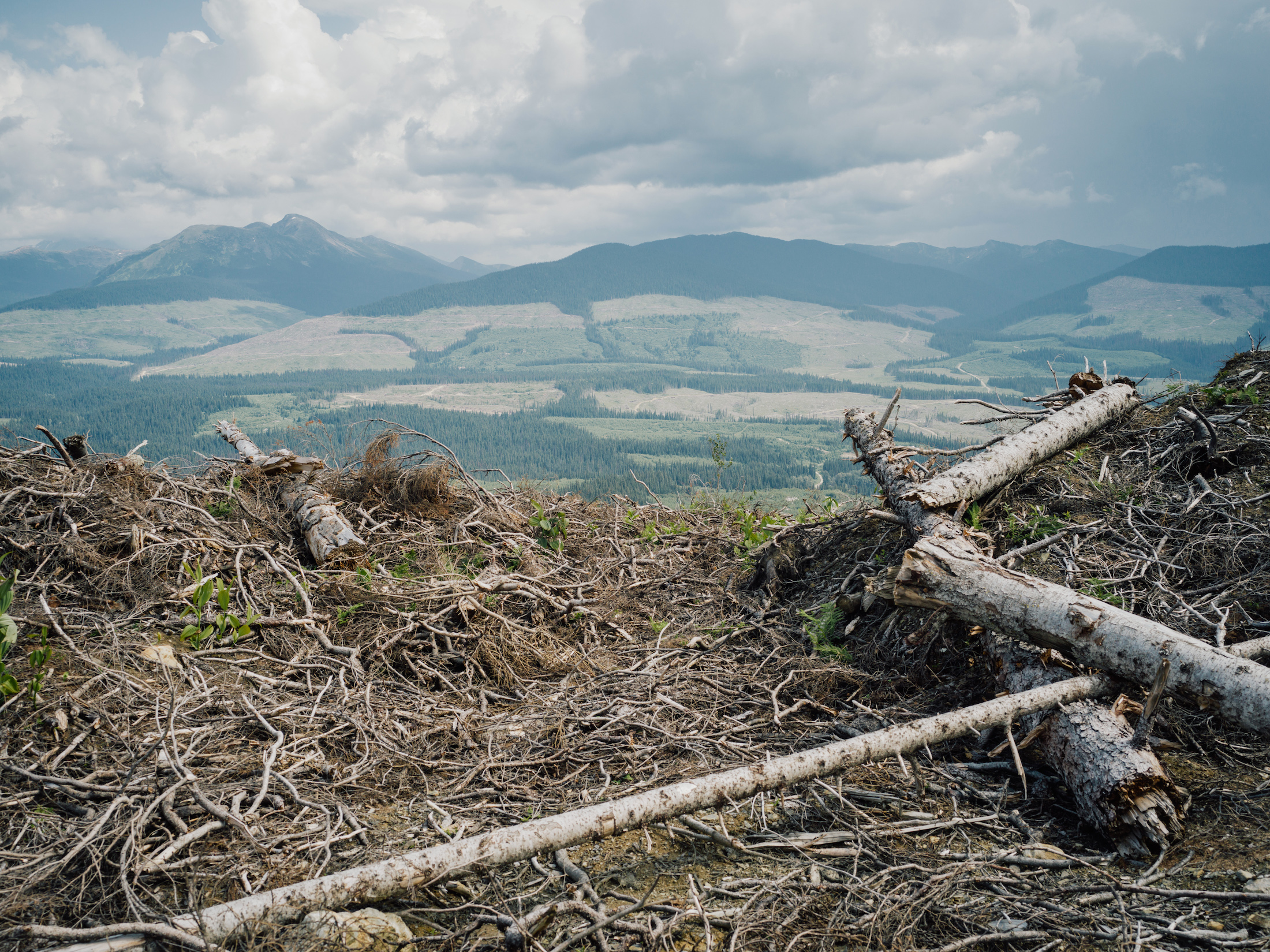Articles Menu

Apr. 30, 2025
More than 80 per cent of the critical habitat for at-risk species in B.C. fails to meet federal protection standards, according to a government briefing document.
The document was included in a 1,021-page transition binder compiled for B.C. Water, Land and Resource Stewardship Minister Randene Neill, who was appointed last November.
Close to 300 species in B.C. are listed under the federal Species At Risk Act, including southern mountain caribou, spotted owls and southern resident orca whales. Critical habitat — land or water necessary for the survival or recovery of a plant or animal — has been identified in federal recovery plans for 107 of those species, according to the briefing document. Combined, it amounts to 31.3 million hectares — an area about 10 times the size of Vancouver Island.
According to the document, the B.C. government provides “special management” of more than 34.5 million hectares of habitat for at-risk species. But not all of this area is considered “critical habitat” and not all meets legal federal protection standards, the document says. The provincial government, for instance, allows commercial logging in some special management areas.
The document concludes that “81 per cent of legally identified critical habitat in B.C. could not be deemed as protected by Canada.”


Charlotte Dawe, a government relations and campaign specialist with the environmental law charity Ecojustice, said that figure demonstrates the B.C. government’s “clear failure” to protect critical habitat for species at risk of extinction.
“We operate as if we don’t have any species at risk,” Dawe said. “We’re just gambling.”
Despite repeated commitments from both the federal and provincial governments to conserve vital habitat for at-risk plants and animals, many B.C. species continue to struggle to survive against the backdrop of declining and degraded habitat.
There are serious consequences for humans too — the same ecosystems that support a diversity of plants and animals clean the air we breathe and the water we drink, and provide the medicines that heal us and the food that nourishes us.
In a statement to The Narwhal, a spokesperson for the Ministry of Water, Land and Resource Stewardship said B.C. “is committed to improving habitat protection and recovery of species at risk.” The spokesperson pointed to a range of initiatives to help at-risk species, including habitat conservation, breeding species like Vancouver Island marmots and spotted owls in captivity, as well as maternal penning and supplemental feeding to help caribou through the winter as the availability of lichen, their primary food source, declines due to industrial logging and other human-caused disturbances.
The spokesperson said federal standards fail to account for the “nuance” of the regulatory tools B.C. can use to reduce risks to at-risk species.
While the statement said B.C. is committed to reporting its progress on critical habitat protection under the billion-dollar nature agreement it signed with Ottawa and First Nations in 2023, the spokesperson said B.C. does “not expect that all federally identified critical habitat will meet [the federal] standard, nor is this necessarily required.”
The spokesperson said Neill’s ministry will also measure success by assessing whether at-risk wildlife populations stabilize or grow.
Populations of endangered species in B.C. have continued to decline in recent years. Across Canada, the number of plants and animals considered at some risk of extinction steadily creeps upwards. Thirty-five new species in B.C. were listed under the federal Species at Risk Act in the past year, according to Neill’s briefing document.
Concerns about the lack of sufficient habitat protections for at-risk species in B.C. date back decades.
In 2013, B.C.’s then-auditor general John Doyle found “habitat preservation is critical to the conservation of biodiversity and government’s lack of implementation and monitoring is troubling.” The auditor general also highlighted significant gaps in legislation and poor implementation of existing policies. Doyle noted these were longstanding issues, raised in an audit two decades earlier.
Since then, conservation groups have repeatedly sounded alarm bells about the failure of the government’s piecemeal approach to protecting at-risk species, urging the province to adopt an overarching species-at-risk law.
Dawe said there are still major legal gaps in B.C. that leave at-risk species vulnerable to further impacts. As one example, she noted forestry companies aren’t required to survey for at-risk species before they log.
The NDP government promised to pass endangered species legislation when it was elected in 2017, but later abandoned the commitment. More recently, the government consulted on a proposed biodiversity and ecosystem health framework, which it said would lead to broader biodiversity legislation. The draft framework was released in 2023, but Dawe said it also now appears to be at a “standstill.”
“They just need to find the backbone to actually do it,” she said.
The government spokesperson said B.C. is reviewing both its Wildlife Act and Forest and Range Practices Act and updating the list of at-risk species and ecosystems that can be protected under them.
“We recognize that sustainable resource development and long-term prosperity for British Columbians cannot be a trade-off between the environment and the economy — we can, and we must support both,” the spokesperson said.
Speaking ahead of Monday’s federal election, before she was re-elected in her Saanich-Gulf Islands riding, Green Party co-leader Elizabeth May said Canada’s Species At Risk Act also needs to be strengthened to be effective.
“The way the act is constructed, it almost can’t protect anything,” she told The Narwhal.

While the federal government has the authority under the act to issue an emergency order to protect an at-risk species and its critical habitat when a province has failed to, it rarely does.
“Look at the situation for the southern resident killer whales,” May said. “Even when you finally get a minister of environment to bring a request for an emergency order to cabinet, it fails at the cabinet table.”
In November, federal scientists determined southern resident orcas continue to face imminent threats to their survival and recovery, prompting former environment minister Steven Guilbeault to recommend that the federal cabinet issue an emergency order for their protection. But the cabinet refused, saying it would instead pursue “incremental measures.”
“Meanwhile, species at risk are increasingly endangered, their habitat is increasingly disappearing and the threats, particularly from climate change, accelerate,” May said.
She noted it was just a few years ago that Canada and 196 other countries committed to protect and restore nature at the United Nations biodiversity conference in Montreal.
“When we make a commitment that we’re going to keep species at risk and endangered species from going extinct, then we have to protect their critical habitat,” May said.
The federal NDP, Conservative Party and Liberal Party did not respond to The Narwhal’s request for comment ahead of Monday’s election, which saw the Liberals re-elected.
In their platform, the Liberals pledged to protect and restore nature, re-committing to conserve 30 per cent of Canada’s land and waters by 2030, and promised to lessen the impacts on at-risk species in areas where the party is planning major infrastructure development.
[Top photo: Most of B.C.’s boreal caribou live in Treaty 8 territory. Decades of oil and gas development have carved up the forests they call home, leaving them vulnerable to predators. Photo: Ryan Dickie / The Narwhal]